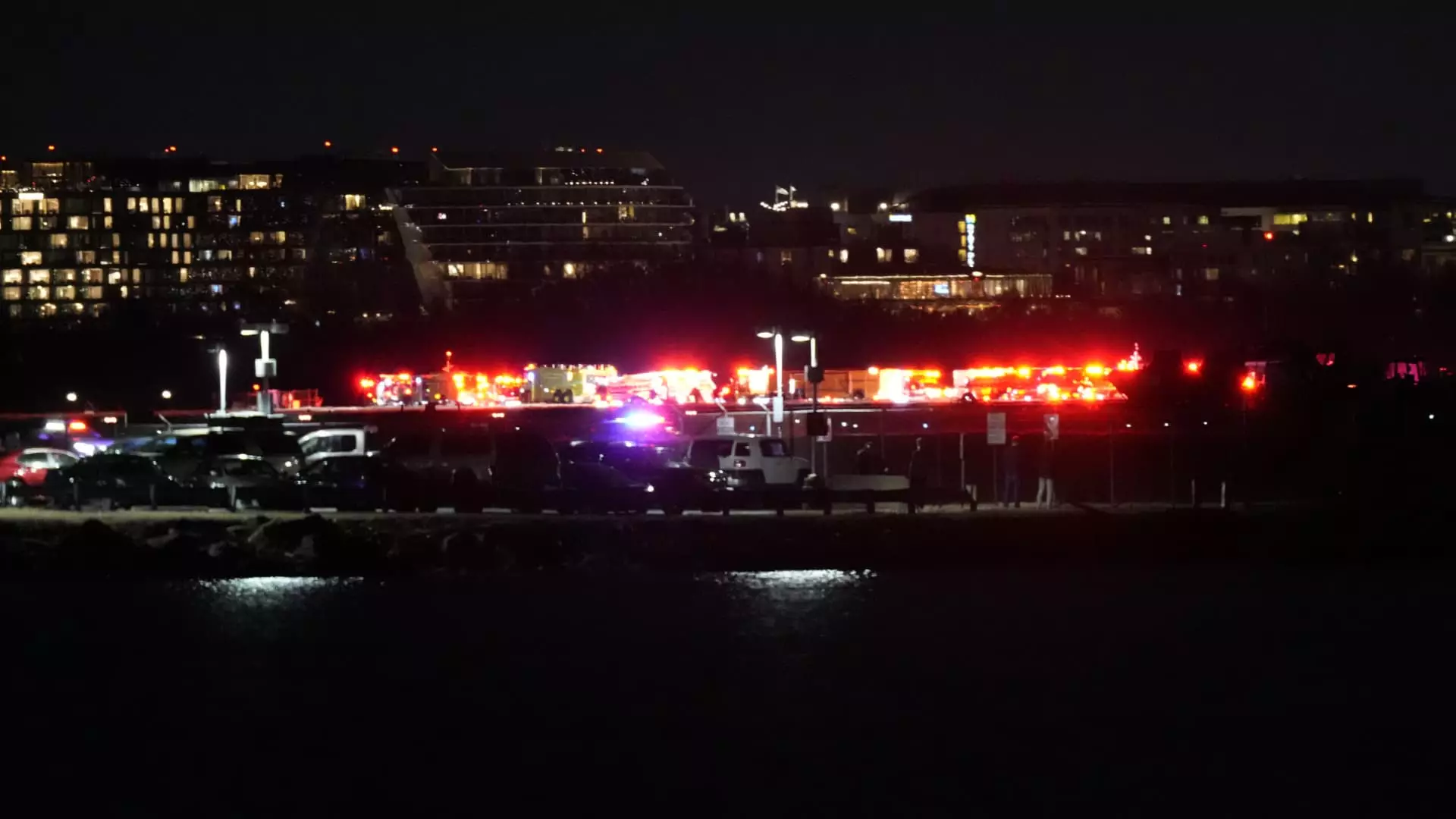On an otherwise routine Wednesday evening, an American Airlines regional jet was involved in a catastrophic collision with a military helicopter, marking one of the most severe air disasters in the United States in over a decade. The American Eagle Flight 5342, operated by PSA Airlines, was nearing its destination, Ronald Reagan Washington National Airport, when it struck a Sikorsky H-60 helicopter around 9 p.m. ET. With 64 souls on board, including 60 passengers and four crew members, the gravity of this incident quickly captured national attention.
According to the Federal Aviation Administration (FAA), American Eagle Flight 5342 was on its final approach, descending towards Runway 33 when the accident occurred at an altitude of approximately 300 feet. This collision not only raises alarms about the safety protocols within civilian and military aviation but also serves as a stark reminder of the potentially tragic outcomes when two air vehicles share the same airspace at critical moments.
As reports of the incident circulated, American Airlines’ CEO, Robert Isom, announced that he and a specialized team would head to Washington D.C. in light of the tragedy. The airline’s swift response included providing emergency contact information for worried families, further underscoring the serious nature of the situation. The airport itself was closed until approximately 11 a.m. ET the following day, demonstrating the incident’s immediate and far-reaching impact on regional air traffic.
In a joint effort, local authorities and rescue workers began their operations in the cold waters of the Potomac River, where both aircraft ended up. The recovery efforts, complicated by challenging weather conditions, were quickly recognized as a race against time. Eyewitness reports indicated that rescue teams were observed pulling bodies from the water shortly after the collision, heightening the urgency for accurate information regarding casualties.
Historically, the U.S. has seen a significant decline in fatal commercial airline crashes, with the last major incident occurring back in February 2009 when Continental Flight 3407 tragically went down near Buffalo, New York. Following that disaster, stringent regulations were imposed to improve pilot training and rest requirements, showcasing how past tragedies have led to positive changes in aviation safety. However, this recent collision raises fresh questions about the adequacy of current protocols, particularly concerning airspace management between civilian aircraft and military helicopters.
Transportation Secretary Sean Duffy, who had only recently assumed office, referred to the incident as a “tragedy” during his early morning press conference on Thursday. Such acknowledgments from federal officials highlight the serious implications of this collision, not only for the individuals directly involved but also for public confidence in flying safely.
The U.S. military confirmed that the Sikorsky helicopter was conducting a training flight out of Fort Belvoir, Virginia, and officials emphasized their commitment to cooperating with local authorities throughout the investigation. However, the nature of this incident raises significant concerns about procedural overlaps between military operations and civilian air traffic, necessitating a review of existing protocols.
Investigations launched by the FAA and the National Transportation Safety Board will undoubtedly scrutinize the circumstances leading to this disastrous event. Moreover, the absence of a permanent FAA head further complicates leadership during this critical time, as the agency navigates an increasing array of investigations and risks to aviation safety.
This tragic event serves as a pivotal moment for not only the aviation industry but also for the broader public understanding of air travel safety. The hearts of many will be heavy as they await updates regarding the fate of those on board the ill-fated flight. As the nation reflects on this incident, there is an urgent call for improved coordination between military and civilian aviation bodies to prevent such calamities from happening in the future.
The collision near Ronald Reagan Washington National Airport starkly illustrates the intricate balance air traffic management must maintain to ensure safety for all. As investigations proceed, there is hope that lessons learned from this tragedy will guide future regulations and prevent further losses in an increasingly interconnected airspace.

